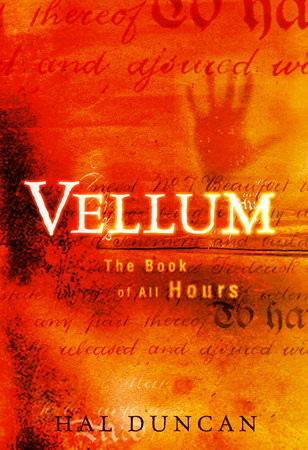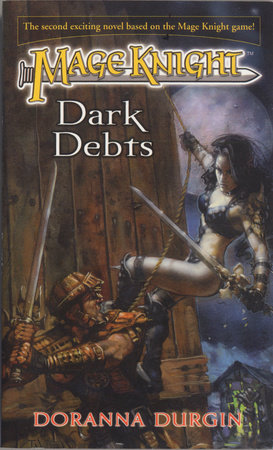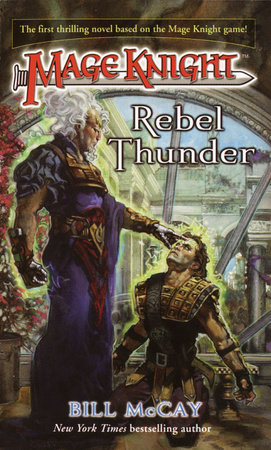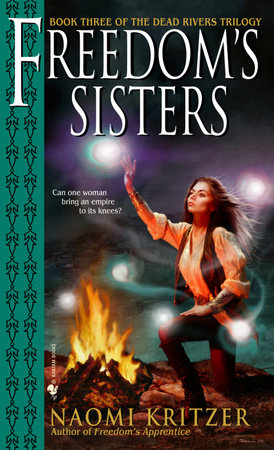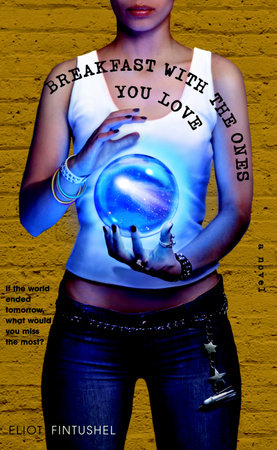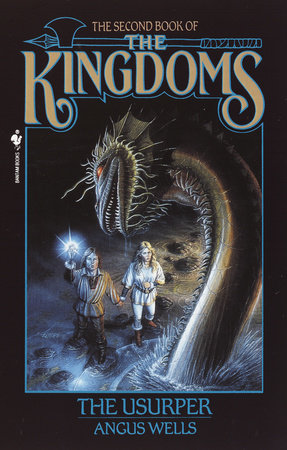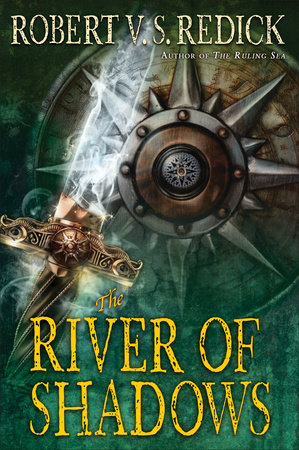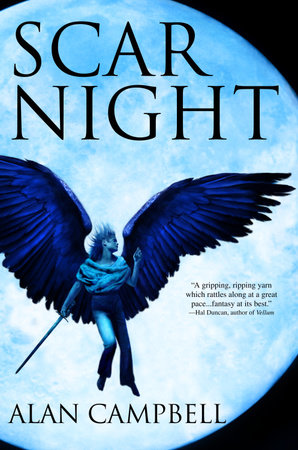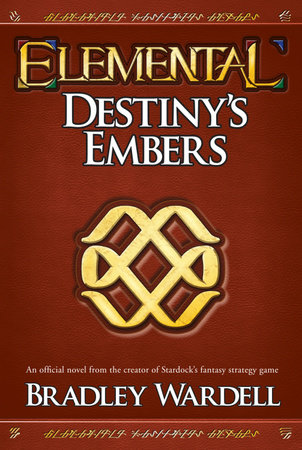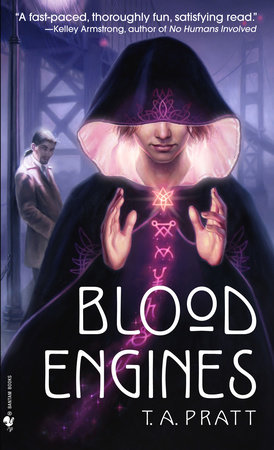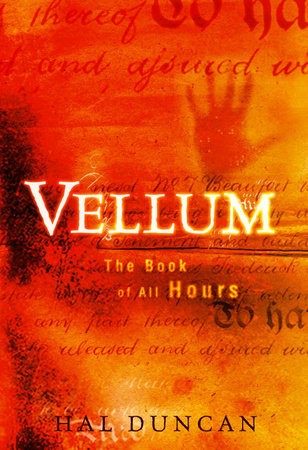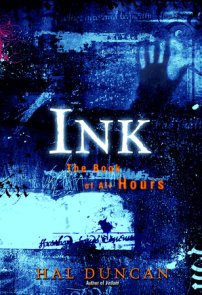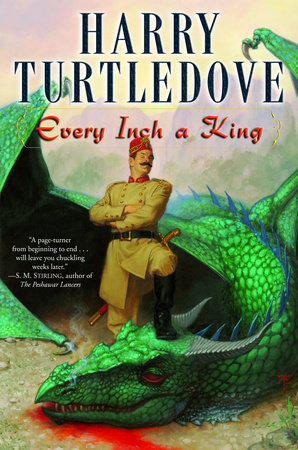Author Q&A
An Interview with Hal Duncan,
author of Vellum, The Book of All Hours
DR:I’m hesitant to ask for a brief synopsis of the plot of Vellum because it embraces so much history and mythology along with its fantastic and science-fictional elements. I suppose a convenient starting point might be The Book of All Hours.
HD:The Book of All Hours is the book that defines the Vellum, this 3D timescape. It’s a book that, according to one legend, contains everything that’s ever been written, everything that ever will be written, and everything that’s never been written. Because of that it’s got the names of every god, angel, or demon–or unkin as they’re called in the book–by which they can of course be bound. So the legend says. At the start of the novel the Book is found by a thief, Reynard Carter, who uses it to guide him through the Vellum; but that’s just the framing narrative for the main action, which kicks off as a ruling faction of self-righteous unkin–the Heavenly Host, basically–are gearing up for an apocalyptic final conflict to wipe out all the splinter-groups of rebel unkin who’ve refused to sign up to their Covenant. The heroes are a handful of unkin who don’t want any part in this war on either side; all they want is to live out their lives in peace. All the unkin were human once, you see, until they came into contact with the Cant, the ur-language which can reprogram reality itself, which can reprogram your very identity. The heroes are newbloods, and they remember what it’s like to be human, where most unkin have long since surrendered to their grandiose delusions.
So the story becomes that of these draft-dodgers and deserters: a trailer-park biker-chick called Phreedom; her brother, Thomas, who’s something of a fairy in all senses of the word; Seamus, the Irish unkin who initiated them both; and Jack, a Covenant spearholder who’s spiritually shattered by what he has to do. It’s about the different ways they try to escape the roles written for them in the Book. It’s about the chain of events kicked off by Thomas’s dreams, Phreedom’s schemes, and Seamus’s absolute refusal to play the game the Covenant want him to. And it’s about how all of these come together to create a force that might just bring the whole Covenant crashing down.
DR:Would it be wrong to think of the unkin as archetypes made flesh?
HD:Most of the key characters in the novel are definitely archetypes. Actually, there’s a seven-fold pseudo-Jungian model of the psyche in there, if you dig that sort of thing–Reynard as Persona, Phreedom as Anima, Jack as Id, and so on. I’m interested in exploring the permutations of potential relationships between these abstract components, how they interact when you instantiate them in this context or that and throw them in together. There’s a sense in which the whole thing is one big psychodrama, these characters dancing round each other, changing their relationships with one another–sister, brother, killer, lover, friend, father–just as the archetypes of the Jungian psyche manifest in dreams in different forms, a sequence of dreams in Jungian psychology being constructible into a story of psychological change. Not, I hasten to add, that it’s all going to end with "and then I woke up."
DR:After reading the novel myself, it occurred to me that Vellum is one of those books that teaches you how to read it as you go along.
HD:I really like that idea of books which teach you how to read them as you go along and, actually, Vellum might be one of those books. Not because I think of it as particularly innovative or experimental, but it is pretty unconventional. One of the key conceits of the novel is the idea of 3D time, taking our forward-and-back "frontal" dimension of past, present, and future and adding a side-to-side "lateral" dimension–i.e., parallel worlds–and an up-and-down "residual" dimension–i.e., more primal realities buried under the surface of our own, like strata of sedimentary rock. Like if you dig down beneath the surface of this world the realities become more broadly brush-stroked, with more basic metaphysics, until what you’re dealing with is magic rather than logic, the primal chaos out of which our reality evolved.
That type of multiverse is fairly familiar from the traditional "other realms" backdrops of fantasy, but I wanted to apply that to the story as well, to treat the events themselves as three dimensional, rather than just have characters and action traveling between worlds, this scene here, that scene there. The best comparison I can think of is Cubism. In the same way the Cubists were trying to show multiple perspectives on a flat canvas, I’m trying to give the reader a story which takes place in the future and in history, across alternate realities, and at different levels of reality. The story of an Irish soldier in World War One is also that of Prometheus; peel back this Fenian rebel in the stockade for stealing the captain’s whisky for the lads and you have Prometheus bound in the Caucasus for his theft of fire from the gods.
I think once you really grasp that conceit, once you start to visualize the story in those terms, it should click for you.
DR:How long did it take you to write Vellum? Was the novel composed in its present form, or did the mosaic-like structure evolve as you were writing?
HD:I started with a single short story, "Slab City, April 16th," back in 1995, which eventually became Chapter 2 of Vellum. That introduced the idea of the unkin, the Covenant, and the Cant, as well as the characters of Phreedom and Seamus; I’d always intended to follow it up with more unkin stories but I got as far as one more and stalled. At the same time, I had this idea of the Book of All Hours, and a hugely ambitious novel I wanted to base around that idea: four volumes, each thematically focused on a season and a time of day–Summer and Day, Fall and Dusk, and so on. I’d just read Finnegans Wake, so the start of it was full of Joycean wordplay, and it had all the obsessions with archetypes and ur-realities that you find in Vellum, though nothing of the text made it into the book. That stalled as well, though; I just didn’t have the skills to handle it or the idea of the Vellum itself as something to hold on to, to give it shape.
So over the next ten years I worked away on various stories and novellas that all focused on these same themes, that used the same characters again and again but in different settings and in different styles. In a lot of these I found myself using fragmented narratives, at first in the conventional genre mold of "letters found in trunk" (as in the Caucasus sections of Vellum) but gradually doing more cut-up and fold-in stories (as in the Jack Flash sections). Some of these worked okay as individual stories, but a lot of the time I felt I was working on the fifth story in a sequence where the other four hadn’t been written, if that makes sense, or where the other four had been written but in an entirely different setting and in an entirely different idiom. The characters of Jack and Thomas just kept popping up in story after story, in radically different forms, but forms that were nevertheless avatars of the same archetypes.
Then I did this one story that became the faery section, based on the murder of Matthew Shepard, drawing parallels to Pan, Christ and Tammuz … and suddenly it just clicked with the world of the unkin. Two novellas that became the first volume of Vellum just poured out. By that point the mosaic structure of titled sections in four panels each had come together, and I was starting to see how that could be scaled up; but I was still thinking of it as a collection of thematically linked short stories. It was only as I started trying to situate these, like trying to work out where each track should go on an album, that I realized they needed to be woven through each other, that the real story, the core story, was in the connections and disjuncts between them.
DR:How did you choose the specific myths that you use, and the various historical periods in which events in the plot iterate those myths?
HD:It was Thomas who was the catalyst here. I’ve always been drawn to the character of Tammuz, the Sumerian equivalent of Adonis and arguably, I think, a prototype of Christ … but way sexier. As a shepherd and a bit of a nancy boy, someone we first meet in the Sumerian myth Dumuzi’s Dream lounging lazily under a tree, he resonates with all those pretty-boy dreamers of Greek myth and Romantic poetry–Endymion, Narcissus, and so on–and for me that means he’s a sort of symbol of a lost idyll, a culture which accepted the sexual, the sensual, as in no way opposed to the spiritual, a culture of homosexual priesthoods and ritual prostitution. Thomas, as this puckish Tammuz, encapsulates an innocence that’s not desexualized, infantilized, but quite the opposite; it’s the innocence of Pan rather than that of Peter Pan.
It was the realization that Thomas was Phreedom’s brother that sent me back to Slab City and the mythos of the unkin, because Dumuzi’s Dream comes down to us from its inclusion at the end of The Descent of Inanna. I suddenly saw how I could map the tale of Inanna onto the character of Phreedom, take this biker-chick and fuse her with the Sumerian goddess who takes on the Queen of the Dead herself, the original "feisty young woman." Writing Phreedom’s part of the story was a pretty simple splicing together of the near-future SF/F world and my adaptation of the Sumerian original, but when it came to doing the Dumuzi section with Thomas on the run through the Vellum I wanted far more switches and shifts of setting, a fluid, almost unbounded backdrop for his metamorphoses. The simple word-play of Seamus and Shamash gave me the back-story for the Finnan of "Slab City" (who didn’t have a first name at that point, who I hadn’t even decided was Irish) as a veteran of WW1, his role in Thomas’s story, and his voice as a working-class Irishman.
The second volume just sort of exploded from that. Years ago I remember watching a BBC dramatization of Prometheus Bound by Aeschylus, staged with all sorts of nods to Communist Russia–Prometheus as a hero of the revolution against Kronos, exiled by the new tyrant, Zeus as Stalin. There’s also a filmed version of a poem by Tony Harrison which plays on ideas of industrialization, class, unions, and the horrors of the 20th century, Dresden and Auschwitz. The Prometheus story is dealt with so superficially, I think, in a lot of genre stories which are basically just adventures–stealing the McGuffin from the gods. We tend to ignore the most powerful part of the myth, to my mind–Prometheus, reviled by ingrate humanity, punished by tyrannical Zeus, bound to a rock, his liver being torn apart by an eagle, and screaming bloody fury at his fate. With Aeschylus and Harrison in mind, and with Scottish socialism in my blood, I don’t think I could help but make the connection with the early 20th century, with a story of rebellion and betrayal that starts with the Red Clyde and ends with the Spanish Civil War.
DR:Conventional wisdom says that aspiring writers have to get an agent before they sell their first book, but that wasn’t the case for you, was it? How did you beat the odds?
HD:I was lucky as hell. A few of the guys from the GSFWC who’d been working away for a similar period as myself–Michael Cobley and Gary Gibson–got novel deals. Others like Neil Williamson and Phil Raines have had numerous stories or honorable mentions in Year’s Best anthologies So I went down to Blackpool Eastercon a few years back, and hanging out with these guys meant I was also hanging out with the writers and editors they knew from the business. Neil, bless him, was critiquing a first draft of Vellum at the breakfast table one morning and got asked what he was reading by the right person. That sort of sparked off a chain of reading and recommendation that ended up with Peter Lavery at Pan Macmillan ready to take a look simply because someone whose opinion he respected said, you should read this Two weeks later I had a deal.
So I was a jammy sod, as we say in the UK. I mean, you can’t try and make something like that happen; the more you do, the more likely you are just to destroy any chance you have of getting published. The last thing any writer or editor wants at a con is some crazed loon with a manuscript under their arm trying to blatantly schmooze them. But the SF/F scene is pretty friendly and open, and word of mouth is as good for selling a manuscript as it is for selling a published novel An agent gets a cut if an editor picks up the novel they recommend; if that recommendation is coming from someone with nothing invested in that novel (and someone with the sense not to talk up a bad book just because it’s by a friend), that editor may well pay more attention.
That’s what happened in my case. I was kind of surprised to say the least.
DR:One aspect of Vellum I really enjoyed is its passionate embrace of political and social advocacy. Not just in regard to the Iraq War and the War on Terror, but extending to the influence of the religious right, questions of economic power, gay rights, and so on. In that respect, as well as the experimental nature and high literary quality of your writing, it reminded me of the New Wave sf of the 60s and early 70s. Recently, China Mieville, among others, has brought angry social engagement back into the genre. Do you see yourself as part of a movement or trend in this regard?
HD:I’m not sure if there’s enough of a wide-scale shift to talk about a trend but maybe I’m just not well-enough tuned to what’s going on in SF at the moment. It’s quite possible, I think, that the start of the 21st century–the Neo-Con/PNAC agenda and machinations of the Bush administration in particular–has given us a world that’s just begging for writing which engages with it politically; and SF/F as a fiction of extrapolated abstractions is possibly more suited to that than contemporary realist works with a tendency to focus on the concrete melodramas of the middle-class. Is that what’s happening though? I don’t know. I’d like to think so. I look around the world right now and I see the 20th century starting all over again–the same bankrupt reactionary Romanticism in America that gave rise to Fascism in Europe, detention without trial on suspicion of sedition, identity cards, bloody trials over teaching Creationism in schools. What year is this? I’d like to think I’m not the only one who thinks a writer could and should engage with their political environment.
In terms of a movement, though–as much as I write passionately from my own idiosyncratic pacifist/socialist/anarchist/liberal/humanist/nihilist viewpoint, as much as I’ll even have characters like Seamus Finnan outright preaching, you know, I don’t want my fiction to be didactic; I don’t want it to be bound to a certain ideology. My own beliefs, my own responses, that passion and anger, do fuel the writing, but I don’t want them to steer it, to totally control it, because that way lies blinkered dogmatism. I think it’s more important to pay witness. That’s what I’m trying to do with the Red Clyde or with Matthew Shepard. I’m not raising the red flag or the rainbow flag; I’m just calling it as I see it, personally, passionately.
DR:Do you consider yourself to be writing science fiction, fantasy, or an amalgam of the two? Or do you prefer to avoid labels altogether?
HD:I love labels, actually, but I can’t settle on one for more than a minute. I’m not big on "science fiction" or "fantasy," because I think they’re pretty meaningless other than as marketing categories. Critically speaking, I think they’re vacuous, simultaneously vague (because as marketing terms they’re only slapped on works so they can be sold to a certain audience) and over-defined (because in critical terms we insist on arguing over how this literary form or that is the real science fiction, the real fantasy, how this work isn’t, so it’s cross-genre or slipstream or whatever) The real situation is, I think, that there’s a mode of writing you could, for want of a better term, describe as Strange Fiction. I’d define this in terms of Delany’s description of subjunctivity, a sort of readerly response in which the sentences of a story have a certain modality of possibility–this could happen; this could not happen; this should happen; this never happened.
Naturalistic fiction stays firmly in the subjunctivity of this could happen, but Strange Fiction is that in which, at some point, the subjunctivity flips, becomes this could not happen. As a reader, however, we’ve already suspended our disbelief. We’re reading with the this could happen subjunctivity firmly switched on. And it stays switched on. The tension between this could happen and this could not happen is what kicks certain readers out of the text, readers who don’t want that frisson of improbability But it’s exactly that tension which powers Strange Fiction, which readers of Strange Fiction are seeking. And other subjunctivities–none of them mutually exclusive–are fired off by our intellectual and emotional responses. We challenge the tension. How could this happen? Should this happen? Must this not happen? Where a work offers rationalization of how that which could not happen here could theoretically happen elsewhere or elsewhen, you have a science-fictional story; that’s why alternative history books are labeled SF despite being sod-all to do with science. Where a work plays on our desires or fears, this should happen or this must never happen, you have fantastic fiction or horror fiction, because that’s played against an, Oh God, but it could, it could!
My writing exploits all those subjunctivities, but that doesn’t make it an amalgam, a cross-genre work, I think. A vast proportion of the works we shunt into one genre or the other, saying this is science fiction, that is fantasy, are in fact, I’d argue, as much one as the other, because underneath the spurious and contentious definitions based on tropes and techniques, it’s all Strange Fiction. Is Bradbury’s "The Veldt" science fiction, fantasy, or horror? Really, it’s all three. And really all three of those labels don’t tell us why, the key things the story does that make those labels applicable. So I’d call it Strange Fiction, and talk about the subjunctivities that make it that way.
But that’s just my label of the moment, in critical mode. I’d be as happy talking about "Indie Fiction," because as a marketing label I think you could slap that on a certain type of book and reach exactly the right audience, the same audience that likes the weird and quirky, non-formulaic and non-generic ethos of moviemakers and musicians. Indie music, indie movies, indie fiction … works for me.
DR:There are a number of memorable characters in Vellum, but the one I found most compelling was Seamus Finnan, who at first seems almost peripheral. Even though there are multiple narrators, it’s his voice that I think of as the voice of the novel. I wondered if you had planned his ultimate prominence from the start or whether he had sort of risen up from the page and surprised you?
HD:It was very much the latter. The initial plan was to have Jack become the dominant character of Volume Two, but I realized that Jack’s story really straddled the books, that his real point of emergence as the firestarter had to be in Ink, in Volume Three, where the theme is winter and night–Saturnalia and Walpurgisnacht, you know, Halloween and Guy Fawkes, darkness and chaos and insanity, the season of bonfires and fireworks. With Volume Two being about the dusk, the autumn, the dying of the light, I realized it had to have a voice which represented the everyman, the human spirit in a more realistic, grounded form than the fiery wild man. With passion, yes, with fire, but tinged with melancholy, sorrow. When I wrote that first section in the trenches of WW1, with Seamus talking to Thomas, he just came alive and from then on it was inevitable. It’s that thing that writers talk about a lot, where a character just sort of takes over and says, oh right so, sure and ye thought ye were fookin runnin the show, did ye? Well, sure and ye’ve got another fookin think coming, son, cause sure and I’m not fookin dancin to your fookin tune, ye fookin bastard. I’ll do what I fookin well like.
I was sort of sad, actually, that he doesn’t play a larger part in Ink, because his is the voice that’s maybe closest to my own, that comes most naturally. But in the same way that the story moves on to him from Phreedom and Thomas, in Ink it’s the other peripheral characters who take center stage. He’s there, but in the grand scheme of things, he’s already handed on the torch so to speak.
DR:The 1998 murder of Matthew Shepard in Laramie, Wyoming is symbolically echoed again and again in the novel. Can you talk a little bit about why this crime looms so large in the book, and also the difficulties of using an event like this in a novel of the fantastic?
HD:It’s immensely difficult to use something like that in a novel of the fantastic, because you can’t help but ask yourself constantly if you’re exploiting this real person’s real suffering, their real death. I still worry about what his family would think, whether they’d be offended, hurt, outraged. I’m still worried about the fact that Thomas as a character is not a portrait of Matthew Shepard, couldn’t be a portrait of him because I have only the scantest knowledge from research of what he was like as a person. I couldn’t possibly do him justice. I mean, really I’m writing about the event, the death, in a very abstract way rather than about him as a person. So am I just using him as a symbol? Am I capitalizing on him in a way that’s ethically dubious? Am I rendering him a cipher for my own literary purposes?
This is where, I think, you can’t afford to be didactic, to let your own ideology turn a real atrocity into an exercise in point-scoring. It comes down to honesty, to integrity. I felt that if I subsumed the reality into the text, rewrote the story to distance it from the actual fact, then I would be at risk of co-opting it, fantasizing it into a personal myth which I’d ultimately be selling as "my story." So I felt it was important to strip away the fantastic gloss, to lay the story bare and say, within the text, this isn’t just a story. There was a real Matthew Shepard. He was fucking crucified on a hillside in Laramie, Wyoming, by these people. This man has a website with an animation of him burning in Hell. These are the fucking facts which my story is only a shadow of, a reflection of.
The same holds true, incidentally, with the Spanish Civil War section at the end. The names of soldiers, what happened to them, were taken pretty much directly from testimonies of Scottish men of the International Brigades. I felt they should be … paid witness to.
So why is the death of Matthew Shepard so important to me? What is it that overrides all my doubts about the horrible possibility of exploiting and trivializing his murder. I think it’s the fact that he was crucified.
I mean, stop for a moment and think about that.
He was crucified.
I don’t want to project some analysis of mine onto that reality. I just think it has to be said, has to be spoken out loud, has to be written and read. It has to be put bluntly and brutally and hopefully, hopefully, in such a way that the reader will go and find out the truth, the full story, for themselves, because such things should never be forgotten.
DR:Will the Book of All Hours conclude with the sequel to Vellum, Ink, or are there more volumes planned beyond that?
HD:Ink is the end of the Book of All Hours. That’s it, done. There will be more stories with the characters in different forms. There will be other unkin stories, novels set in some of the folds of the Vellum which I’m looking forward to returning to. But the story of the Book of All Hours will be over at the end of Ink; it’s a discrete structure, a diptych of novels, an arc told in four volumes based around the seasons–and there are only four seasons.
DR:You’ve mentioned a bit about Ink. Can you give us more of a taste of what to expect?
HD:Well, if you thought Vellum was a mindfuck, buckle yourself in for Ink, because you’re looking at a reality that’s now been torn apart by the bitmites. If anything, Ink is an even wilder trip than Vellum, more cut-up and fold-in, layered and intricate. As I said above, the first volume of Ink is all darkness and fire–winter and night–so it has to have that chaotic, delirious quality. We’ve got more of Jack Flash blowing shit up. We’ve got a Harlequin play staged by Reynard and various characters you’ll recognize from Vellum, based on Euripides’s The Bacchae. We’ve got decapitated angels and dark rituals. Then, just to wrap things up in Volume Four, we’ve got intrigue and slaughter in 20’s Palestine, in the modern-day city of Sodom. With zeppelins.
DR:What other projects are you working on?
The next novel is a retelling of the Gilgamesh myth which will have certain similarities to Vellum and Ink in so far as I want to do a prose translation of the original text and weave it in with a near-future SF thread, much as I did with the Inanna/Phreedom sections at the start of Vellum. I want to map the relationship of Gilgamesh with the wild man Enkidu to one between an academic–a professor of anthropology whose main field of study is totemism–and a wild, hedonistic post-human with bodymods who may well, I suspect, turn out to be a bit of an avatar of Thomas at his most puckish. There’s a third strand that will be woven in, a mapping of the same story to a relationship between a European settler in early British Columbia and a Tsimshian native. It’s going to be a lot of fun.
